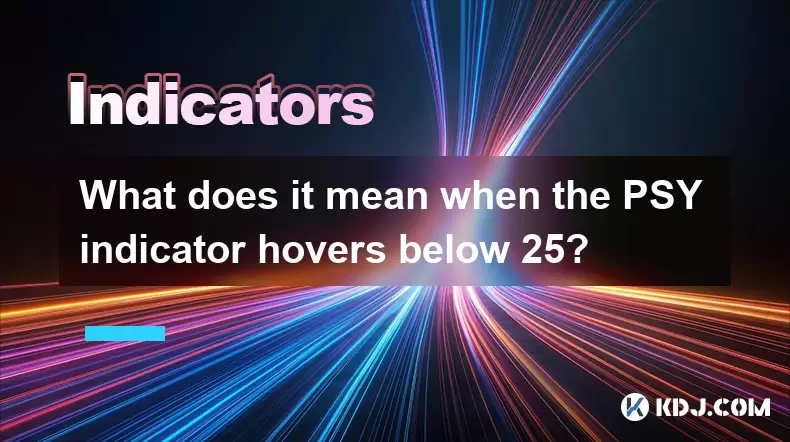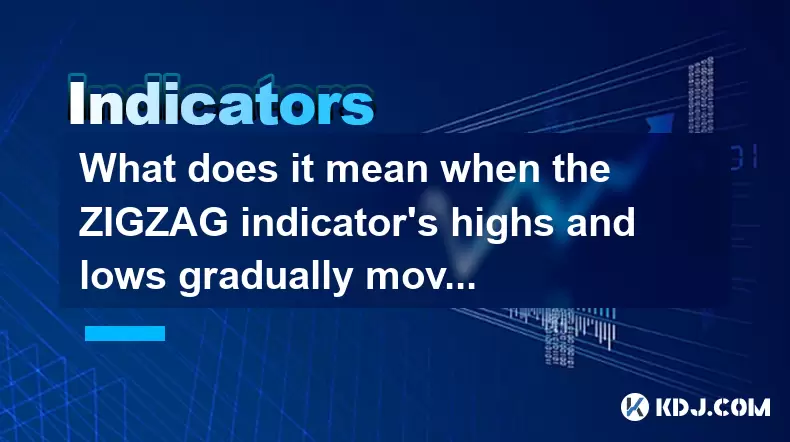-
 Bitcoin
Bitcoin $116900
0.00% -
 Ethereum
Ethereum $4280
5.48% -
 XRP
XRP $3.265
-1.45% -
 Tether USDt
Tether USDt $1.000
-0.01% -
 BNB
BNB $807.0
1.41% -
 Solana
Solana $183.1
2.93% -
 USDC
USDC $0.9999
0.00% -
 Dogecoin
Dogecoin $0.2440
6.50% -
 TRON
TRON $0.3357
-0.88% -
 Cardano
Cardano $0.8178
2.63% -
 Hyperliquid
Hyperliquid $44.13
7.45% -
 Chainlink
Chainlink $21.39
9.09% -
 Stellar
Stellar $0.4524
-0.84% -
 Sui
Sui $3.957
2.13% -
 Bitcoin Cash
Bitcoin Cash $572.7
-2.54% -
 Hedera
Hedera $0.2671
1.54% -
 Avalanche
Avalanche $24.77
4.17% -
 Ethena USDe
Ethena USDe $1.001
0.02% -
 Litecoin
Litecoin $122.3
-1.94% -
 Toncoin
Toncoin $3.432
2.26% -
 UNUS SED LEO
UNUS SED LEO $9.007
0.49% -
 Shiba Inu
Shiba Inu $0.00001396
5.26% -
 Uniswap
Uniswap $11.09
1.64% -
 Polkadot
Polkadot $4.155
4.57% -
 Dai
Dai $1.000
0.00% -
 Pepe
Pepe $0.00001253
5.11% -
 Cronos
Cronos $0.1588
2.67% -
 Bitget Token
Bitget Token $4.512
0.05% -
 Monero
Monero $275.0
0.64% -
 Ethena
Ethena $0.7527
15.10%
What does it mean when the PSY indicator hovers below 25?
When the PSY indicator falls below 25, it signals extreme bearish sentiment in crypto markets, often indicating oversold conditions and potential reversal opportunities.
Aug 10, 2025 at 01:14 am

Understanding the PSY Indicator in Cryptocurrency Trading
The PSY indicator, also known as the Psychological Line indicator, is a momentum oscillator used in technical analysis to measure the sentiment of market participants over a specific period. It calculates the ratio of days when the closing price of a cryptocurrency increased compared to the total number of trading days in that period. The formula is expressed as:
PSY = (Number of Rising Days / Total Number of Days) × 100
Typically, the PSY indicator is set over a 12-day or 24-day window, though traders can adjust this based on their strategy. Values range from 0 to 100, where readings above 75 suggest strong bullish sentiment, while readings below 25 indicate extreme bearish sentiment. When the PSY indicator hovers below 25, it signals that the majority of recent trading sessions have ended with price declines, reflecting a market dominated by fear and selling pressure.
Interpreting PSY Below 25: A Signal of Oversold Conditions
When the PSY indicator remains below 25, it often points to an oversold market condition in the cryptocurrency space. This means that the asset has experienced a prolonged period of downward price movement, potentially driven by panic selling, negative news, or broader market corrections. In such environments, many traders may have already exited long positions or initiated short positions, reducing the number of new sellers.
- The sustained low PSY value suggests that buying interest is nearly absent, and pessimism is widespread.
- However, extremely low readings can also indicate that the selling pressure is nearing exhaustion.
- Markets rarely continue moving in one direction indefinitely, and extended periods below 25 may set the stage for a reversal if positive catalysts emerge.
It is important to note that while a PSY below 25 reflects bearish sentiment, it does not guarantee an immediate price rebound. Confirmation from price action or other technical tools is necessary before making trading decisions.
Using the PSY Indicator Alongside Other Technical Tools
Relying solely on the PSY indicator can lead to misleading conclusions. To improve accuracy, traders often combine it with other technical analysis tools. For example:
- RSI (Relative Strength Index): If both the PSY and RSI are below 30, this strengthens the case for an oversold condition.
- Moving Averages: A cryptocurrency price trading below its 50-day or 200-day moving average while PSY is under 25 reinforces the bearish trend.
- Volume Analysis: Declining volume during a PSY drop below 25 may suggest weakening momentum, while rising volume could indicate strong conviction in the downtrend.
When the PSY indicator is below 25 and diverges from price (e.g., price makes a new low but PSY starts rising), this could signal a bullish divergence and a potential reversal. Traders watch for such patterns to identify possible entry points for long positions.
Step-by-Step Guide to Monitoring PSY Below 25 on Trading Platforms
To effectively use the PSY indicator, follow these steps on popular cryptocurrency trading platforms like TradingView, Binance, or Bybit:
- Open your preferred trading chart and select the cryptocurrency pair (e.g., BTC/USDT).
- Navigate to the "Indicators" section and search for "Psychological Line" or manually input the PSY formula.
- Set the period (commonly 12 or 24 days) and apply the indicator to the chart.
- Observe the PSY line and locate when it crosses below the 25 threshold.
- Watch for how long it remains below 25 and whether it begins to rise while price continues to fall.
- Combine this observation with candlestick patterns (e.g., hammer, bullish engulfing) for confirmation.
Some platforms allow customization of overbought/oversold levels. Adjust the horizontal lines at 25 and 75 for clearer visualization. Ensure the data feed is accurate and the time frame (e.g., 4-hour, daily) aligns with your trading strategy.
Historical Examples of PSY Below 25 in Crypto Markets
In the volatile world of cryptocurrencies, the PSY indicator dropping below 25 has occurred during several major market downturns. For instance, during the May 2021 Bitcoin crash, after Elon Musk announced Tesla would no longer accept Bitcoin due to environmental concerns, BTC price dropped over 30% in days. The PSY indicator on the daily chart fell to 18, reflecting extreme bearish sentiment.
Similarly, in June 2022, amid the collapse of Terra (LUNA) and broader exchange liquidity concerns, Ethereum’s PSY dipped below 25 on multiple exchanges. Traders who monitored this level, combined with volume and support levels, were able to identify potential stabilization zones.
These examples show that while a PSY below 25 does not immediately predict a turnaround, it highlights periods where market psychology is overly negative—often preceding a correction or consolidation phase.
Risks and Limitations of Acting on Low PSY Readings
Although a PSY below 25 may suggest a potential buying opportunity, it carries significant risks. Cryptocurrency markets can remain oversold for extended periods due to macroeconomic factors, regulatory news, or technological failures.
- A low PSY does not account for fundamental developments, such as exchange hacks or protocol vulnerabilities.
- In strong downtrends, the indicator can stay below 25 for weeks, leading to premature entries.
- High-frequency trading and algorithmic sell-offs can distort psychological signals.
Therefore, traders should avoid placing blind faith in the PSY reading alone. Risk management techniques—such as setting stop-loss orders and position sizing—are essential when acting on oversold signals.
Frequently Asked Questions
What time frame is best for observing the PSY indicator in crypto trading?
The 12-day and 24-day periods are most commonly used. Shorter time frames like 12 days are suitable for day traders, while 24-day settings provide a broader view for swing traders. The choice depends on your trading style and the volatility of the cryptocurrency.
Can the PSY indicator be applied to altcoins?
Yes, the PSY indicator works on any cryptocurrency with sufficient trading volume and price history. However, for low-cap altcoins with erratic price movements, the signal may be less reliable due to thin order books and manipulation risks.
Does a PSY below 25 always lead to a price rebound?
No, a PSY below 25 does not guarantee a rebound. It indicates strong bearish sentiment, but prices can continue falling if negative fundamentals persist. Always confirm with volume, support levels, and broader market trends.
How is the PSY indicator different from the RSI?
The PSY indicator measures market sentiment based on the number of up days, while RSI measures the speed and change of price movements using magnitude. PSY focuses on frequency of gains, RSI on price velocity—making them complementary but distinct tools.
Disclaimer:info@kdj.com
The information provided is not trading advice. kdj.com does not assume any responsibility for any investments made based on the information provided in this article. Cryptocurrencies are highly volatile and it is highly recommended that you invest with caution after thorough research!
If you believe that the content used on this website infringes your copyright, please contact us immediately (info@kdj.com) and we will delete it promptly.
- Penny Crypto Dreams: Can XRP Reach $10,000? A Look at LILPEPE and the Meme Coin Mania
- 2025-08-10 04:50:11
- World Liberty Financial's $1.5B Fundraise: What's the Deal with the WLFI Token?
- 2025-08-10 04:30:12
- Ozak AI, Tokens, and Investment: What's the Buzz?
- 2025-08-10 04:35:15
- Pepe Coin Price Prediction: Will the Memecoin Frog Leap to 100x Gains?
- 2025-08-10 04:50:11
- Solana Meme Coin Presales: Hype or the Next Big Thing?
- 2025-08-10 02:50:12
- Pi Network, Altcoin Season, and Breakout Tokens: What's Hot in 2025?
- 2025-08-10 02:50:12
Related knowledge

What does it mean when the price is trading above the SAR indicator but the red dots are densely packed?
Aug 09,2025 at 11:49pm
Understanding the SAR Indicator and Its Visual SignalsThe SAR (Parabolic Stop and Reverse) indicator is a technical analysis tool used primarily to de...

What does it mean when the MACD histogram continues to shorten but the price reaches a new high?
Aug 09,2025 at 09:29pm
Understanding the MACD Histogram and Its ComponentsThe MACD (Moving Average Convergence Divergence) indicator is a widely used technical analysis tool...

What does it mean when the Triple Moving Average (TRIX) turns downward but the price doesn't fall?
Aug 09,2025 at 12:42pm
Understanding the Triple Moving Average (TRIX) IndicatorThe Triple Moving Average, commonly known as TRIX, is a momentum oscillator designed to filter...

What does it mean when the 10-day and 30-day moving averages repeatedly intertwine?
Aug 10,2025 at 02:42am
Understanding Moving Averages in Cryptocurrency TradingMoving averages are among the most widely used technical indicators in the cryptocurrency tradi...

What does it mean when the CCI indicator continues to hover below -100?
Aug 10,2025 at 04:21am
Understanding the CCI Indicator and Its Baseline ValuesThe Commodity Channel Index (CCI) is a momentum-based oscillator used in technical analysis to ...

What does it mean when the ZIGZAG indicator's highs and lows gradually move downwards?
Aug 10,2025 at 02:14am
Understanding the ZIGZAG Indicator in Cryptocurrency TradingThe ZIGZAG indicator is a popular technical analysis tool used by cryptocurrency traders t...

What does it mean when the price is trading above the SAR indicator but the red dots are densely packed?
Aug 09,2025 at 11:49pm
Understanding the SAR Indicator and Its Visual SignalsThe SAR (Parabolic Stop and Reverse) indicator is a technical analysis tool used primarily to de...

What does it mean when the MACD histogram continues to shorten but the price reaches a new high?
Aug 09,2025 at 09:29pm
Understanding the MACD Histogram and Its ComponentsThe MACD (Moving Average Convergence Divergence) indicator is a widely used technical analysis tool...

What does it mean when the Triple Moving Average (TRIX) turns downward but the price doesn't fall?
Aug 09,2025 at 12:42pm
Understanding the Triple Moving Average (TRIX) IndicatorThe Triple Moving Average, commonly known as TRIX, is a momentum oscillator designed to filter...

What does it mean when the 10-day and 30-day moving averages repeatedly intertwine?
Aug 10,2025 at 02:42am
Understanding Moving Averages in Cryptocurrency TradingMoving averages are among the most widely used technical indicators in the cryptocurrency tradi...

What does it mean when the CCI indicator continues to hover below -100?
Aug 10,2025 at 04:21am
Understanding the CCI Indicator and Its Baseline ValuesThe Commodity Channel Index (CCI) is a momentum-based oscillator used in technical analysis to ...

What does it mean when the ZIGZAG indicator's highs and lows gradually move downwards?
Aug 10,2025 at 02:14am
Understanding the ZIGZAG Indicator in Cryptocurrency TradingThe ZIGZAG indicator is a popular technical analysis tool used by cryptocurrency traders t...
See all articles

























































































